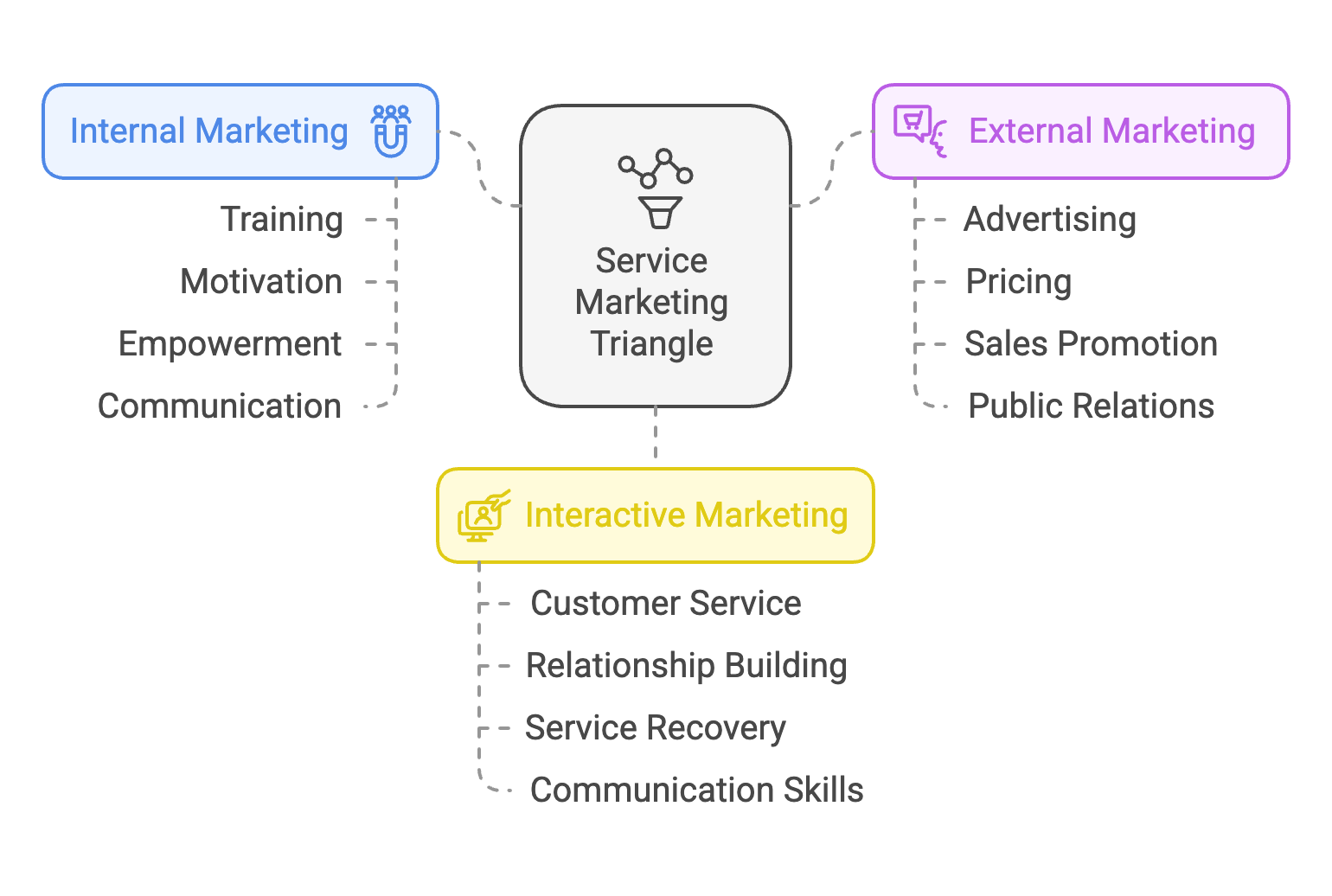Concept of service marketing triangle
The Service Marketing Triangle
The service marketing triangle is a model that highlights the importance of interconnected relationships between the company, its employees, and its customers in delivering exceptional service experiences. It emphasizes that successful service marketing relies on aligning these three key players.
Components of the Triangle
The three sides of the triangle represent different types of marketing:
-
Internal Marketing (Company to Employees): This focuses on enabling employees to deliver excellent service. It involves:
- Training: Equipping employees with the skills and knowledge needed.
- Motivation: Creating a supportive and rewarding work environment.
- Empowerment: Giving employees the autonomy to make decisions and solve customer problems.
- Communication: Keeping employees informed about company goals and customer expectations.
-
External Marketing (Company to Customers): This is the traditional marketing we often think of, aimed at attracting and retaining customers. It includes:
- Advertising: Promoting the service offering through various channels.
- Pricing: Setting competitive and attractive prices.
- Sales Promotion: Offering incentives and deals to encourage purchase.
- Public Relations: Building a positive image and reputation.
-
Interactive Marketing (Employees to Customers): This focuses on the service encounter itself – the "moment of truth" where promises are delivered. It involves:
- Customer service: Providing prompt, courteous, and helpful assistance.
- Relationship building: Creating personalized interactions and fostering loyalty.
- Service recovery: Effectively addressing service failures and complaints.
-
Communication skills: Ensuring clear and effective communication between employees and customers.

Why is the Service Marketing Triangle Important?
- Ensures alignment: By focusing on all three relationships, the triangle helps ensure that promises made to customers are actually delivered by employees.
- Enhances service quality: Motivated and well-trained employees are more likely to provide excellent service, leading to satisfied customers.
- Builds strong relationships: The triangle emphasizes building relationships with both employees and customers, fostering loyalty and advocacy.
- Creates a competitive advantage: In a service-driven economy, delivering exceptional experiences can differentiate a company from its competitors.
Examples
- A hotel invests in training its staff (internal marketing), advertises its amenities (external marketing), and empowers front-desk employees to resolve guest issues (interactive marketing).
- A restaurant motivates its chefs with performance incentives (internal marketing), promotes its new menu on social media (external marketing), and trains waiters to offer personalized recommendations (interactive marketing).
By effectively managing all three sides of the service marketing triangle, businesses can create a synergistic effect that leads to superior service delivery, customer satisfaction, and long-term success.

No Comments